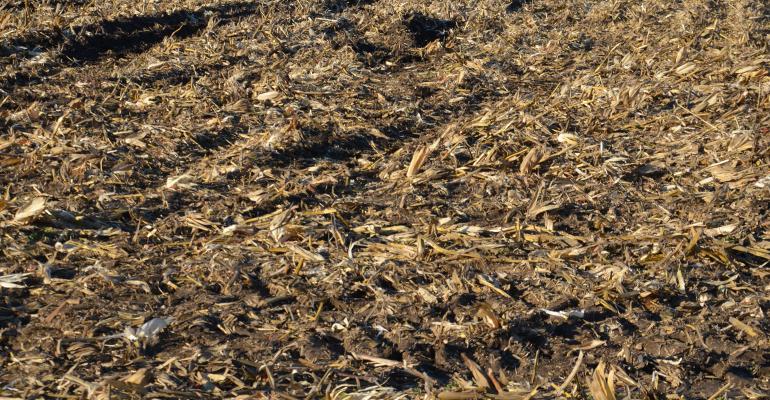Pros, cons for spring tillage in corn after corn

Corn Pest Beat: Growers wonder if tillage will beat back insects and diseases.
Feb 26, 2019
We’re planting corn after corn in a few fields. We no-till, but we still do tillage occasionally. We didn’t till corn stubble last fall. Should we till it before planting? We’re thinking it might help on disease and insect control. Which diseases and insects could it prevent?
The Indiana certified crop adviser panel answering this question includes Gene Flaningam, Flaningam Ag Consulting LLC, Vincennes; Greg Kneubuhler, G&K Concepts, Harlan; and Tom Stein, manager of the Boswell and Templeton branches for Ceres Solutions Cooperative.
Flaningam: Tillage for corn following corn is a great idea if soil erosion isn’t a factor. At this point, primary tillage is not a good option, so look at one of the newer vertical tillage tools for spring tillage. These tools warm soils and size residue, which allows for better seed-to-soil contact. A large reduction in plant foliar disease would not be likely due to the old crop residue in the field. Insect reduction will not be a big factor with single-pass spring tillage.
Kneubuhler: We’ve always been negative on trying to no-till corn back into cornstalks. If I was planting corn back to corn, I would focus on getting tillage done to set up a better seedbed and help with disease and insect control. Incorporation of residue and having good soil contact will help reduce fusarium and pythium.
Several vertical tillage tools do a nice job preparing the seedbed for planting. The biggest caution is to avoid working soils wet. That’s where most go wrong. A lot of times, it takes two passes with vertical tillage in corn back to corn. Lastly, I would say that lighter soils will carry much less risk when doing all the aforementioned rather than heavier soils.
Stein: Expect disease and insect pressure to increase due to additional crop residue. Pathogens that survive in corn residue include inoculum that causes gray leaf spot and northern corn leaf blight, as well as fungi that cause ear and stalk rots such as gibberella, diplodia, fusaruim and anthracnose. The biggest insect threat from crop residue and corn following corn in Indiana is corn rootworm. Plus, exposure to secondary insect pests such as wireworms, white grubs, seed corn maggots and cutworms may be lengthened. Tillage can mitigate disease and insect pressure. However, since tillage wasn’t accomplished last fall, you’re already behind the eight ball.
My concern is that tillage this spring may do more harm than good. Since you’re in a no-till system, your soils are going to take longer to dry out. If it’s dry enough to work ground and soil temperatures are adequate, your time might be better spent planting. Trying to manage crop residue now doesn’t leave much time for residue to decompose before planting. There are other ways to successfully manage challenges — disease and insect pressure notwithstanding — presented in a no-till corn-on-corn environment. They include but aren’t limited to selecting a corn hybrid that has high ratings for disease resistance, emergence, stalk and root strength, with a good insect trait package.
Benefits of your no-till cropping system include increased water infiltration and retention, reduced soil erosion and nutrient loss, improved soil health, and amended soil properties such bulk density and aggregation. Do you really want to adversely affect these assets by doing tillage?

